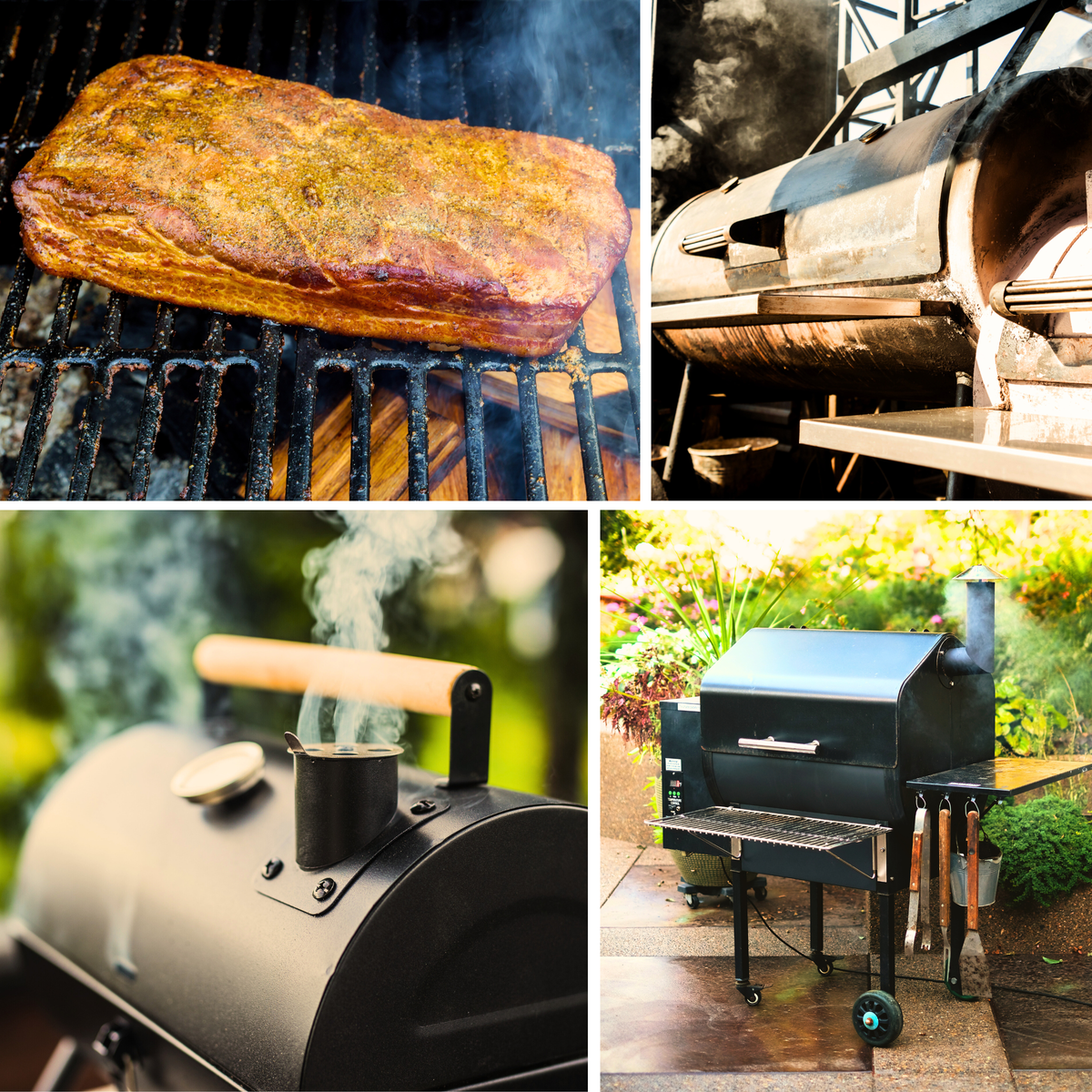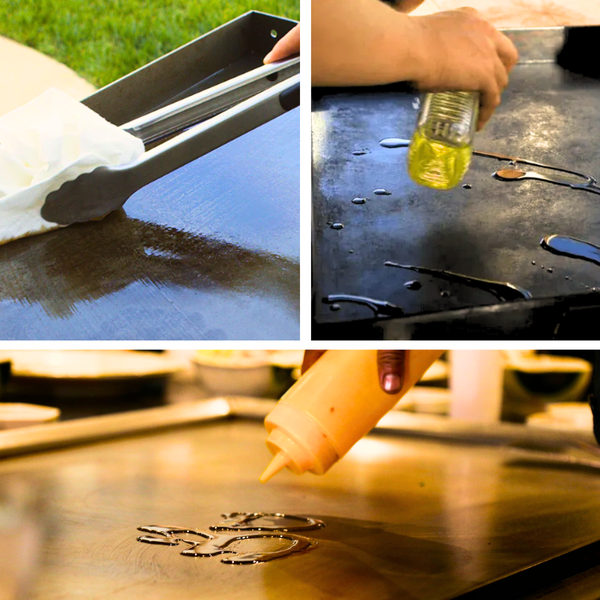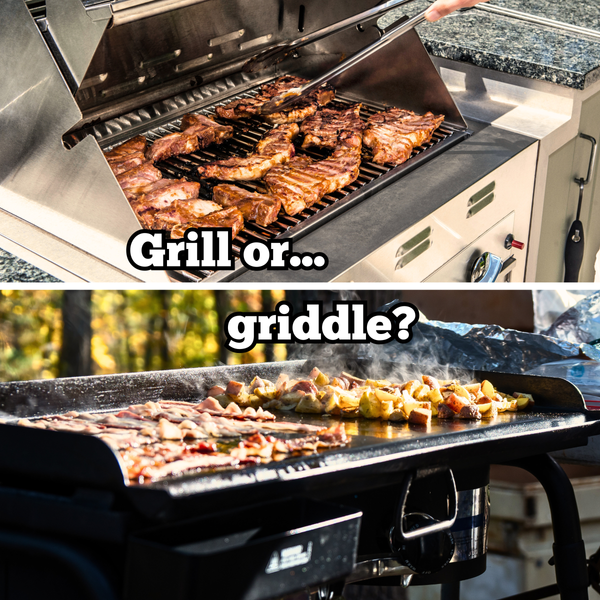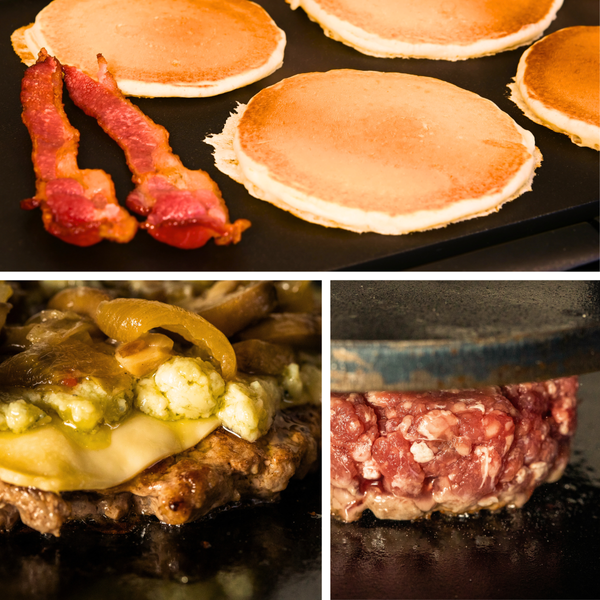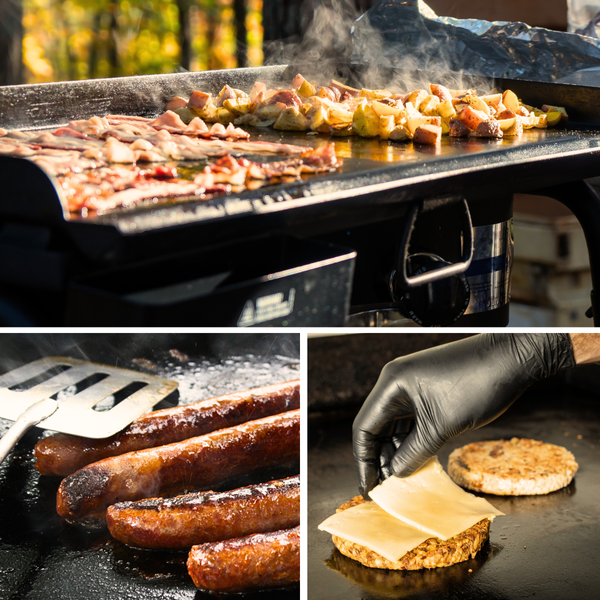When it comes to outdoor cooking, particularly smoking meat, the debate between offset smokers and pellet smokers is as smoky as the meats they cook. Both have their loyalists and their detractors, but what's the real difference? In this comprehensive comparison, we'll delve into the nuances of each to help you decide which is better for your barbecue needs.
Key Takeaways:
- Understand the fundamental differences between offset and pellet smokers.
- Learn about the unique advantages and potential drawbacks of each smoker type.
- Discover which smoker might be the best fit for your smoking style and preferences.
What is an Offset Smoker?
An offset smoker, also known as a horizontal smoker or barrel smoker, is a traditional smoker design. It consists of a large chamber barrel where the meat is placed and a smaller, attached firebox where charcoal or wood chunks are burned to produce smoke and heat. The smoke travels from the firebox into the primary cooking chamber, infusing the meat with a smoky flavor. An offset smoker requires more attention to maintain temperature and smoke output, but they offer a more authentic and hands-on smoking experience.
The Pellet Smoker Revolution
Pellet smokers, on the other hand, are a modern twist on the traditional smokers. They work by burning compressed wood dust, known as hardwood pellets, which are fed into a fire pot by an auger from a storage hopper. An ignition rod lights the wood pellets, and a fan circulates the smoke and heat around the cooking chamber. Pellet smokers produce a consistent heat and smoke level, making the smoking process easier and more convenient, especially for beginners.
Offset Smoker Pros and Cons
Offset smokers are known for their large cooking capacity and ability to impart a smokier flavor to the meat. Offset smokers require natural fuel sources like pure wood logs or charcoal mixed with wood chunks, which many purists argue results in a superior taste. However, they require more fuel and attention to maintain the desired temperature, which can be a challenge for some. The initial cost of a quality offset smoker can be higher, but they are generally cheaper to operate in the long run.
Pellet Smoker Advantages and Disadvantages
Pellet smokers are celebrated for their ease of use and precise temperature control. They are typically equipped with digital controls that allow you to set and maintain the internal temperature, resulting in a consistent cook. Pellet smokers work well for those who prefer a "set it and forget it" approach. However, some argue that a pellet smoker produces too much smoke or that the smoke flavor is not as robust as that from a traditional offset smoker. Additionally, they rely on electricity, which can be a limitation for some users.
Fuel Source and Efficiency
When it comes to fuel source, an offset smoker offers the versatility of using either charcoal, wood chunks, or both. This allows for a greater range of smoke flavor profiles. They are also more fuel-efficient when it comes to how much wood is needed to maintain the smoke level. Pellet smokers, while convenient, can go through more wood since the pellets are made from compressed wood dust and burn quickly.
Temperature Control and Consistency
One of the biggest differences between offset and a pellet smoker is temperature control. An offset smoker requires a separate meat thermometer and constant monitoring to ensure consistent heat. Pellet smokers, with their digital controls and automated feeding systems, maintain the desired temperature with little effort, providing a more consistent cook throughout the smoking process.
Durability and Build Quality
When considering which is better, offset smoker or pellet smoker, it's essential to examine the durability and build quality of each. Traditional offset smokers are often revered for their robust construction, typically featuring heavy gauge steel that can withstand the test of time. The firebox door and main chamber of a classic stick smoker are designed to seal in the smoke and heat, which can be a testament to their superior craftsmanship. These smokers are built to endure the harshness of direct heat and the rigors of smoking for extended periods.
On the other hand, pellet smokers, while also available in heavy-duty options, often include more moving parts due to their automated nature. Components like the pellet hopper, auger, and electronic control systems may be susceptible to wear over time. However, many modern pellet grills are constructed with painted steel and cast iron plate components, aiming to balance durability with advanced functionality. When comparing an offset smoker vs. a pellet smoker, consider how the build quality aligns with your expectations for longevity and performance.
Community and Support
When diving into the world of outdoor cooking, the community and support around your chosen smoker can be a game-changer. For those wondering which is better, offset smoker or pellet smoker, it's worth considering the type of camaraderie and guidance you're looking for. Offset smokers have a traditional, purist following, where enthusiasts revel in the art of tending to the fire and swapping tales of long nights spent perfecting brisket. Online forums and local BBQ competitions are rife with offset smoker veterans eager to share their wisdom and tricks of the trade.
On the flip side, the pellet smoker revolution has given rise to a new community, one that's tech-savvy and values convenience. Pellet grill users often praise the set-it-and-forget-it functionality, which is perfect for the busy home cook who still wants to achieve that smoky flavor. Social media groups and brand-sponsored events provide ample support for newcomers to pellet smoking, with tips on everything from the best pellet flavors for cooking meat to troubleshooting your pellet smoker work. Whether you're a hands-on learner or prefer digital dialogue, there's a supportive community waiting for you.
Health and Safety Considerations
Health and safety are paramount when it comes to cooking meat, and this is where the pellet smoker comparison often comes into play. Pellet smokers are generally considered safer because they offer more precise temperature control, reducing the risk of undercooked food. Additionally, the wood pellets are made from compressed sawdust, which means they contain no additives and provide a cleaner burn. This can be a significant factor for those concerned about the potential health risks associated with exposure to smoke and the chemicals in certain types of charcoal or wood.
Offset smokers, while delivering an authentic smoky flavor, do require a separate fire box and a more hands-on approach to maintain the right temperature and smoke levels. This can introduce variables that, if not carefully managed, might pose safety risks, such as flare-ups or excessive smoke inhalation. However, for the seasoned pitmaster, these risks are part of the allure, offering a more engaging and interactive experience. It's important to weigh these considerations and decide which aligns with your comfort level and desired involvement in the cooking process.
Customization and Accessories
The pellet smoker debate often touches on the ability to customize and accessorize your cooking experience. Pellet smokers have risen in popularity partly due to their versatility, allowing users to easily swap out different flavors of wood pellets to achieve a variety of smoke profiles. Additionally, many pellet grills come with built-in meat probes, Wi-Fi connectivity, and other modern conveniences that enhance the cooking process. These features can be particularly appealing to those who enjoy a high-tech approach to smoking meat.
In contrast, the traditional offset smoker offers a more hands-on experience that can be customized through manual adjustments. For instance, a pipe smoker might experiment with different types of wood smokers, using chunks or logs to influence flavor. The offset grill allows for the addition of a heavy gauge skillet or griddle over the firebox for direct heat cooking, expanding its functionality. While it may not have the plug-and-play accessories of a pellet smoker, the offset smoker provides a canvas for the purist who takes pride in tailoring every aspect of the smoking process.
Cooking Capacity and Space
Most offset grills boast a large cooking capacity, making them ideal for smoking large cuts of meat like pork butt or brisket. The horizontal design allows for more meat to be smoked at once. Pellet grills, while they can have a large grilling chamber, may have a smaller cooking surface in comparison. However, they often come with multiple racks that can increase the overall cooking space.
Smoke Flavor and Quality
The smoke flavor is a critical aspect of smoking meat. Offset smokers, with their use of pure wood chips or logs, tend to produce a more intense and traditional smoky flavor. Pellet smokers, while still delivering a smoky taste, may produce a less pronounced smoke flavor due to the processed nature of the pellets. The quality of the smoke, often referred to as "blue smoke," is also a point of contention, with many claiming that offset smokers are better at producing this ideal smoke quality.
Initial Cost and Long-Term Value
Considering the initial cost, a pellet smoker can be more expensive due to their technological components, such as the digital control panel and automated pellet feeding system. Offset smokers can range in price points, but a heavy gauge steel construction is key for durability and heat retention, which may add to the cost. However, the long-term value should also be considered, as offset smokers can last many years with proper care and maintenance.
Ease of Use and Learning Curve
For beginners, pellet smokers are often recommended due to their ease of use. The automated features and less intensive fire management make the cooking process more approachable. Offset smokers have a steeper learning curve, requiring skills in managing a charcoal fire, controlling airflow with vents, and maintaining a consistent temperature throughout the smoking process.
Maintenance and Upkeep
Maintenance is another factor to consider. Pellet smokers have more moving parts, such as the auger and fan, which may require additional upkeep. They also need to be cleaned regularly to prevent ash buildup from the pellets. Offset smokers are simpler in design, but they still require regular cleaning to remove soot and ash from the charcoal and wood chunks.
Versatility and Cooking Options
Both pellet and offset smokers offer versatility in cooking options. Offset smokers allow for both direct and indirect heat, giving you the option to grill or smoke. Pellet smokers are generally designed for smoking but can also be used for baking and grilling, thanks to their consistent temperature control.
Summary
Choosing between an offset smoker and a pellet smoker comes down to personal preference, skill level, and what you value most in the smoking experience. Offset smokers offer a traditional, hands-on approach with the potential for a deeper smoke flavor, while pellet smokers provide convenience and ease of use with precise temperature control. Consider your lifestyle, budget, and how much time you want to invest in the art of smoking meat before making your decision.
FAQ Section
Q: Which is better, an offset smoker or a pellet smoker?
A: It depends on your preferences. If you enjoy the process of tending to the fire and want a more traditional smoky flavor, an offset smoker might be better. If you prefer convenience and ease of use, a pellet smoker could be the way to go.
Q: Are pellet smokers easier to use than offset smokers?
A: Yes, pellet smokers are generally considered easier to use due to their automated features, such as temperature control and pellet feeding systems.
Q: Can you get the same smoky flavor from a pellet smoker as you can from an offset smoker?
A: While pellet smokers can produce a smoky flavor, many enthusiasts believe that offset smokers provide a more intense and traditional smoke flavor due to the use of pure wood logs or charcoal mixed with wood chunks.



